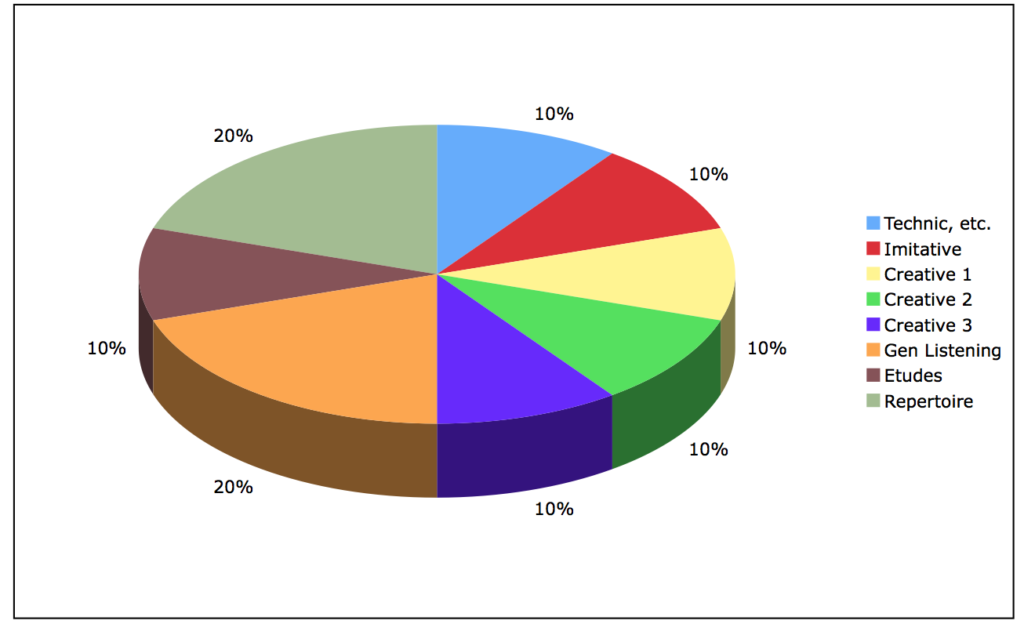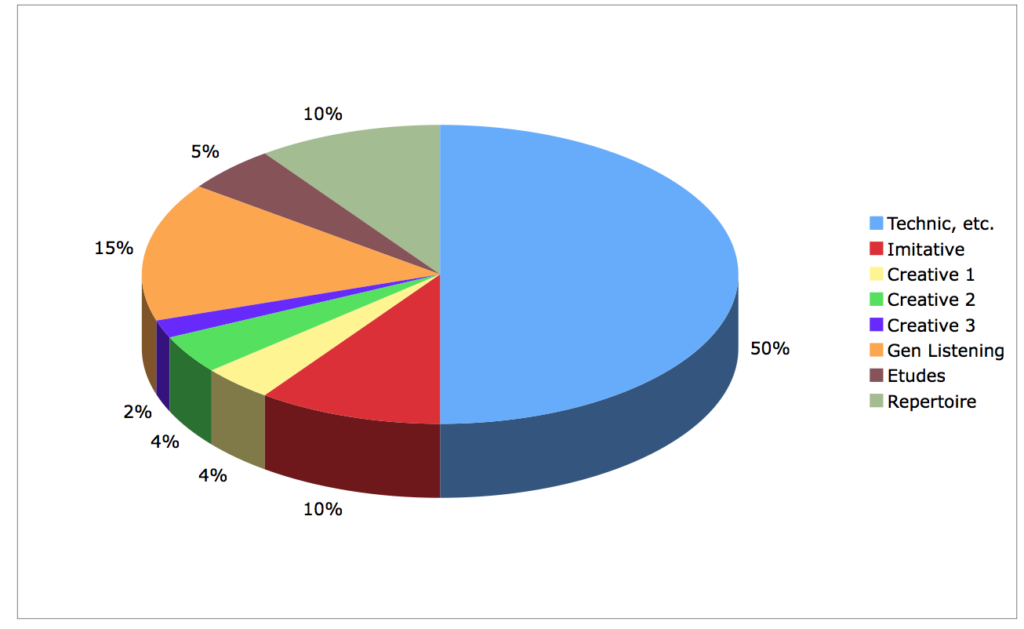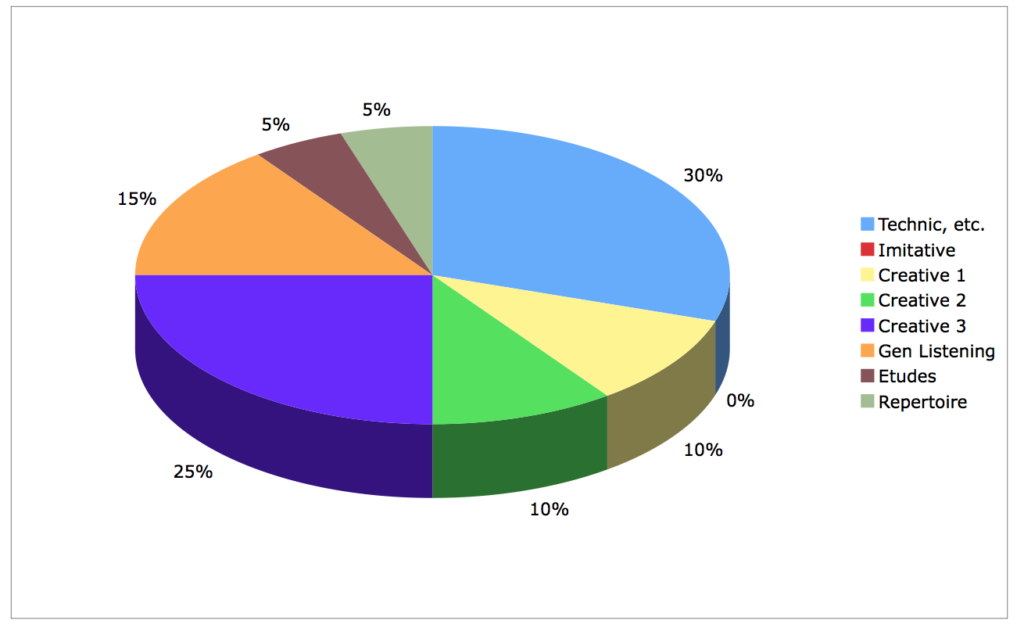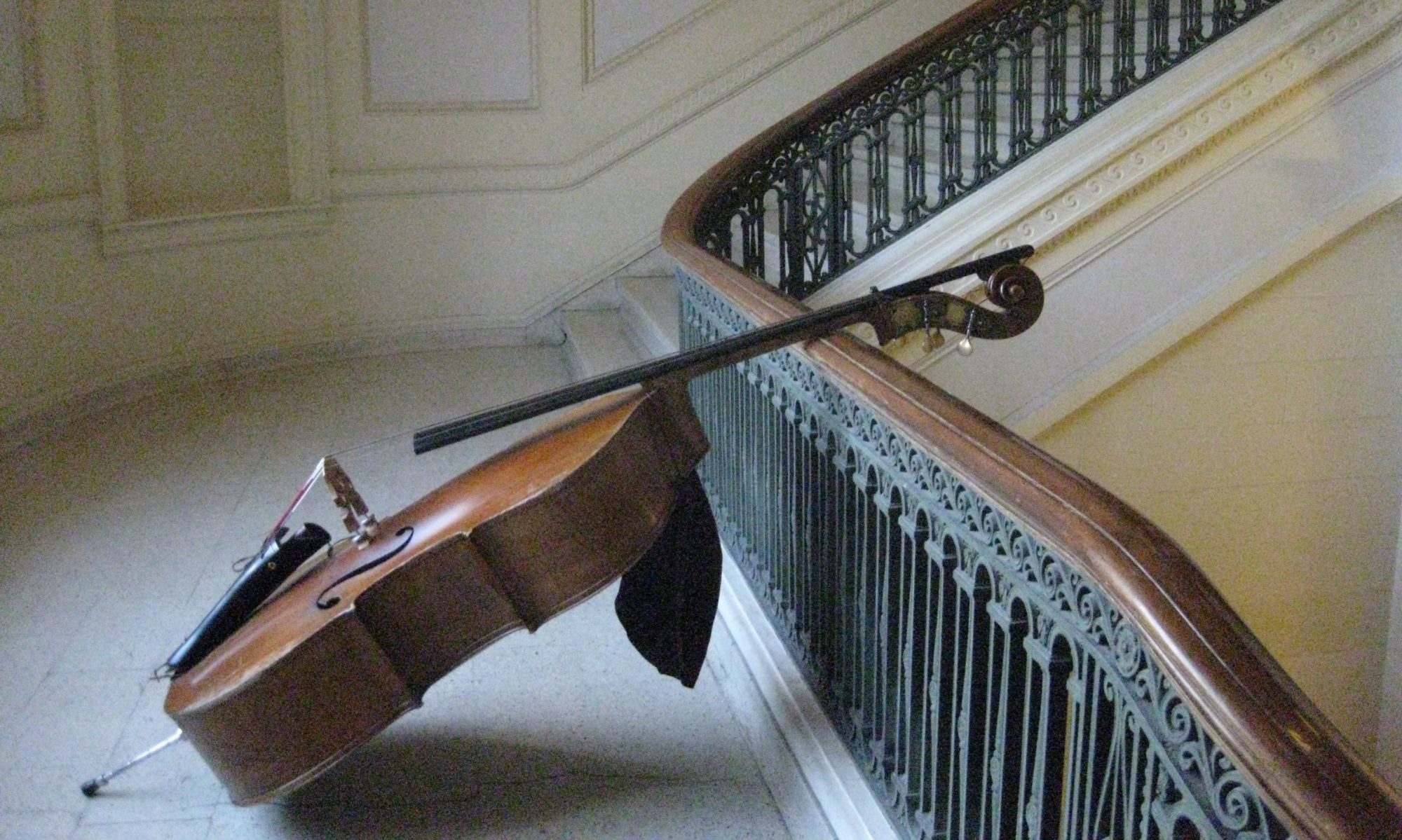Here is a document from a few years ago for students, in which I propose thinking of our practice activities/duties as falling into six general areas..
I. Technic, Scales, Arpeggios
This can include technical studies for
II. Imitative Practice
Working with great jazz recordings is an essential part of a student’s development. There’s general listening of course (see below), but the specific act of “copying” great players on our own and other instruments should be part of the process. Work away from the instrument as much as possible, singing along with the solo phrase by phrase. Once familiar with the material you may notate it, but try to be patient and wait until you have it in your ear before writing it down. You may choose to completely skip the notation phase of this process. The final phase is the playing
III. Creative Practice
- Composition of Tunes and of Lines
- Singing of Lines
- Real-time Practice with the I
nstrument
Once you have decided on an “environment” in which you will be working for the specific practice session (a given tune, chord progression, etc), explore each of the above methods. Writing of lines is an invaluable exercise and can take several forms. Some musicians keep a journal of motifs and then practice using and developing these ideas in the writing and improvising. Singing of lines, both
The last category, real time practice with the instrument is, of course, the final product, and represents “what we do” at a concert, jam session, recording, etc. Experience has shown me that we probably should
First, vary the tempo from very slow to the full range. Spend a good chunk of the time, especially when the focus is on quality of lines, playing at very slow tempos, from 40-60 per quarter note for eighth note lines.
Secondly, remember to transpose. You don’t have to hit every key, but transposition help
Thirdly, there are several options we can use for “assistance” with the practice. The metronome is, of course, a valuable tool we can use at times. Vary the ways
One other important tool to use is to play along with real jazz recordings, playing your own solo over the track. For example, solo along with John Coltrane “Live At The Village Vanguard,” or Miles Davis “Steaming.” This may seem odd at first, playing over a solo by a great artist such as Davis or Coltrane, as opposed to playing their solo, (this would
IV. General Listening
Remember to listen actively as it is essential to ones development as a musician. Here are two very good listening exercises.
1. Listen to the track once through without emphasis on any one instrument, especially the soloist. Listen again all the way and only listen to the drummer. Listen again, only listening to the bass. Listen again, only listen to the piano or guitar. Listen again, only listening each soloist.
2. Before working with the recording, play the melody of a tune, singing along with it. Repeat this as many times as are necessary for you to be able to sing the melody from memory. Now, play the recording from the beginning, singing or playing the melody with the track. When the improvisation begins, keep singing the melody through each solo. You will have not only added another tune to your repertoire, but have a deeper understanding of the form of the song and its relation to the solos.
V. Etudes
This can mean jazz or
VI. Repertoire.
For the jazz musician, knowing tunes is really very important, especially for students who grow up with fakebooks right on their phone! The best way to learn tunes is by ear, using either recordings or books. To learn a tune “by ear” from a book, I mean singing it as you commit it to memory. Transposition will be the best test of how well you know the tune. With “show tunes”, i.e. Cole Porter, Jerome Kern, etc., listening to recordings by great singers of the day (Sarah Vaughan, Tony Bennett, Ella Fitzgerald, Nat King Cole, Peggy Lee, Frank Sinatra, etc.) will give you a much better reference because your getting into the lyric of the tune. When great jazz artists of those eras were creating these innovative performances we are studying now, they were very familiar with the original tune-it informed what they were doing. Therefore, it’s a good thing for today’s student to include as new tunes are learned.
At the same time, repertoire means much much than the “jazz canon” or “standards”. It can really mean any music that we know and can render, so it might include items from around the world, and hit music of today.
I do think a classical foundation is a good thing to pursue from which to investigate all kinds of music, far beyond jazz. So, depending on your instrument and inclination, you may find great joy in pursuing various great works of the European tradition, including, especially for me, Bach, but really across the gamut, from Medieval Music to many important developments of the 20th century, continuing into the future. For example, playing the
It’s important to know certain music, pieces, tunes, grooves, really well. We don’t want to spread ourselves too thin, thereby cutting corners, but at the same too a sense of openness can be a beautiful and beneficial thing.
VII. Performance
This is the final product, whether it’s a rehearsal, jam session, or concert appearance. The key is communication, both with the other musicians and with the listener. How you do this defines who you are as
Examples of Practice Plans
Any of these plans could be the right plan for a given student/artist, depending on which phase of their development is current.
This plan is fairly balanced between all the areas.

This plan leans heavily on technic and scales, etc.

This plan strongly emphasizes imitative work.

This one emphasizes creative work.

The main point I’m hoping to convey is that your practice should have the flexibility to change as you feel is necessary. Hopefully, thinking of your various activities/tasks within your overall practice will result in a regimen that is more productive, while at the same time organized, intuitive, flexible, rewarding and fun! Send me an email if you have any questions- larry@larrygraymusic.com or lwgray@illinois.edu

